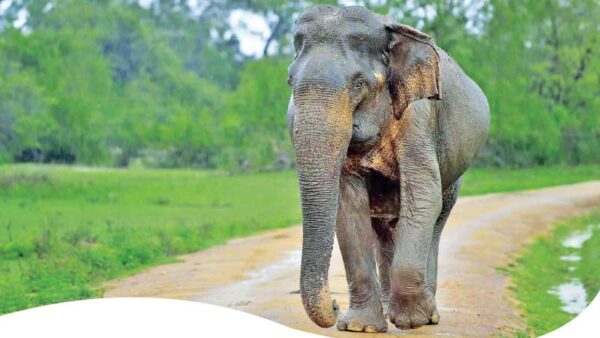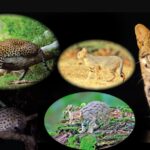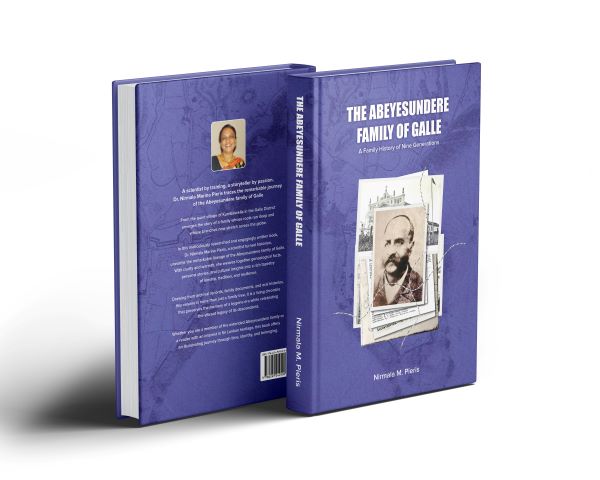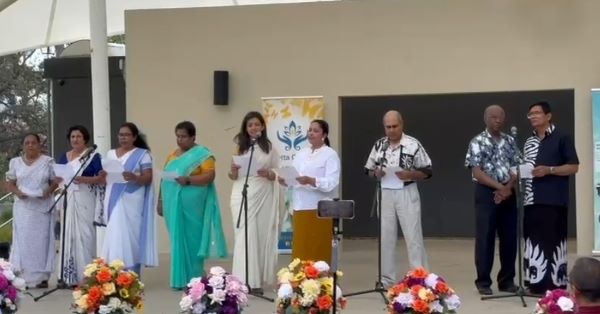Striking a balance between elephants and humans-by Dishan Joseph

Source:Dailynews
A few weeks ago a video went viral on social media. It was about a disturbed wild elephant chasing a safari jeep, and subsequently one other jeep reversing and turning on its side amidst screams of terrified nature lovers. Why do such incidents continue to happen endangering human lives? Is the majestic Sri Lankan elephant also at risk?
Sri Lankans have a responsibility to protect endangered wildlife. However, when the elephant population thrives, the habitats that are situated close to or overlap with the human living space may not be able to fully support their survival, which creates new problems. When the needs and behaviours of wildlife have a negative impact on human interests, or the goals and interests of humans have a negative impact on the behaviours of wildlife, human-wildlife conflicts develop. Is the rapid growth of the population the root cause of the human-elephant conflict?
Wildlife damage can be divided into three categories:

(1) the damage caused by wild herbivores such as elephants and wild boars which mainly rely on crops as food sources, causing economic losses to human beings
(2) the damage caused by large wild carnivores such as leopards, which hunt poultry and other livestock and
(3) wildlife damage to human life caused mainly by elephants.
Death caused by poisonous snake bites in rural Sri Lanka is another issue, and another day’s topic. Many studies have found that the frequency of conflicts between people and wildlife and economic losses are increasing. In my travels to many regions, the villagers expressed their attitude towards elephants. Most of them had a favourable attitudes towards elephants, and did not want to see any serious harm to the elephants. A small number of farmers had a dislike for elephants and hoped that they can be relocated. The main reason why some villagers liked elephants is that the elephants carry a symbolic value to the villagers; they represent the local environment and culture.
The villagers who had not experienced an elephant attack and damage had higher tolerance and positive attitudes towards the elephants. I have observed that male farmers, who had experienced crop damage, were more likely to have negative attitudes towards wild elephants. This may be affected by the social-ecosystem relationship between the local community and the elephants. The main type of elephant incident is the damage of food crops and cash crops. Men are the main labour force in agricultural production, so they tend to show more negative attitudes towards wild elephants. To Sri Lankans, in the city or village, their impressions of elephants often remain in beautiful symbolism. However, negative attitudes are not conducive to the protection of the Sri Lankan wild elephants.
The traditional migration corridor of the elephants has been cut off, and the area for human settlement and the distribution area for the elephants gradually overlap. As a result, accidents associated with the elephants have become a serious problem. At the same time, the human-elephant conflict not only causes economic losses, but also affects and threatens the daily activities and safety of village residents. Once the conflict exceeds the tolerance of local villagers, it is likely to endanger the villagers’ enthusiasm for wildlife conservation.
 There is an urgent need to protect and manage our wild elephants and alleviate the human-elephant conflict. Considering that the attitude and behaviour of indigenous people directly affect the effective implementation of conservation policies and the scientific construction of coexistence mechanisms for human beings and wildlife, it is necessary to conduct research on the relationship between humans and elephants. The elephants rarely attack humans or livestock.
There is an urgent need to protect and manage our wild elephants and alleviate the human-elephant conflict. Considering that the attitude and behaviour of indigenous people directly affect the effective implementation of conservation policies and the scientific construction of coexistence mechanisms for human beings and wildlife, it is necessary to conduct research on the relationship between humans and elephants. The elephants rarely attack humans or livestock.
The human-elephant conflicts occur mainly in villages bordering forest areas and nature reserves. The livestock that is mainly affected includes cattle and goats, while the food crops include rice, corn, sugarcane and banana. Agricultural production can be carried out throughout the year, and crops are planted in all seasons. Therefore, the incidents associated with the elephants are experienced throughout the year. With the vigorous development of economic crops, the original virgin forest has been permanently removed in some areas, and the habitat is more fragmented. Reclamation and cultivation have led to the continuous decrease in the habitat and food sources for elephants, thus forcing the elephants to go out of the forest to seek food in the surrounding agricultural land, forming a situation in which humans and elephants compete against each other for living space.
Most of the villagers assumed a passive role in preventing the human-elephant conflict and after elephant accidents. Most of the villagers did not take any measures after the event. In the selection preference of preventive measures, most people chose to increase foot patrols around their cultivations, followed by driving away elephants with fire or lighting firecrackers at night. With time the elephants have become used to the noise of the “thunder” crackers. It is worth noting that although the conflict between humans and elephants has affected the lives of rural residents, most of the residents still have a positive attitude towards the elephants. This may be closely related to the local historical, cultural tradition and current ecological and environmental protection education.
 The Sri Lankan elephant has become a cultural symbol to the world, which stimulates the pride of the local people. They think that protecting the elephant is protecting certain characteristics of the local cultural heritage and the unique tropical forest environment. The compensation mechanism for wildlife attacks can be a more effective way to enhance villagers’ tolerance towards elephants. The compensation mechanism does not only improve people’s tolerance for the animals causing accidents, but also minimises the economic losses caused by the continuous wildlife damage. Can we assume that elephants have a new demand for food, which has changed their previous feeding behaviour?
The Sri Lankan elephant has become a cultural symbol to the world, which stimulates the pride of the local people. They think that protecting the elephant is protecting certain characteristics of the local cultural heritage and the unique tropical forest environment. The compensation mechanism for wildlife attacks can be a more effective way to enhance villagers’ tolerance towards elephants. The compensation mechanism does not only improve people’s tolerance for the animals causing accidents, but also minimises the economic losses caused by the continuous wildlife damage. Can we assume that elephants have a new demand for food, which has changed their previous feeding behaviour?
Wild elephants prefer sugarcane, corn, banana, and other wild plants. These foods are relatively concentrated and easy to eat, and food from crops has replaced food from wild plants. Once the crops are ripe, elephants swarm into crop areas to feed on crops, thus aggravating the conflict with local villagers.
Long-term exposure to human hostility may make elephants both over-reactive and hostile to people in response. They take a series of revenge actions against human beings. We have observed, when they meet people at close range, they often take the initiative to attack humans without any provocation. On the other hand, villagers are pushed into a precarious position, with their livelihood, property, and life in danger. The forced change in livelihood style as a result of the human-elephant conflict may instigate negative attitudes among villagers towards the elephants, thus jeopardising the effectiveness of elephant protection.
The reality is that Local Government Bodies cannot solve a series of social problems brought about by the overall relocation of villages or the relocation of elephants. The villagers themselves do not want to leave the land where they have lived for generations. The Wildlife Department needs to enhance its response to incidents involving wild elephants. There are many dedicated rangers but they need more resources. Wildlife related tourism, especially safari tours need more regulation and educated guides/drivers who respect the forest and have a genuine passion for wildlife conservation. Sri Lankans must protect the wild elephants that have the natural birthright to live in the forest.






















